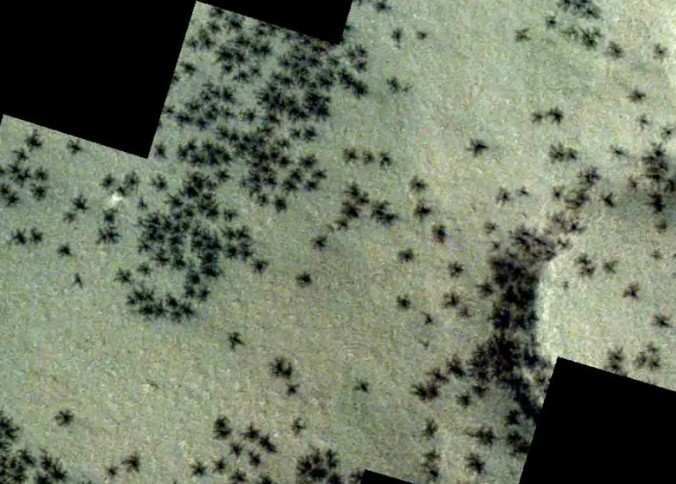Astronomers continue to discover strange things in space, and the latest is named after them Radcliffe wave. This wave-shaped chain of star-forming clouds is the largest coherent structure ever seen in our galaxy: 9,000 light-years from end to end, stretching across the night sky. Canis Major up to Cygnuswith Orion in the middle.
Now it turns out that the Radcliffe tide is indeed moving. This is stated in an article published in the magazine on Tuesday Nature. Star-forming clouds rise above the plane of the galaxy and descend again. This type of wave is called a traveling wave, which is similar to sports fans getting up from their seats and “wavering” around the stadium in a synchronized pattern.
“This cool stuff… you've seen articles about it in the past, but now it's serious. It's a brick in the wall and it's not going to come out,” said astronomer Bob Benjamin of the University of Wisconsin, Whitewater, who was not part of the new research. “This new work is a very important step in understanding the origin of this structure.”.
This system is located within our galaxy and is practically next to it. It spits out 500 light years.
There's another twist to the story: our solar system seems to have passed through it Radcliffe wave About 13 million years ago and may have been An interesting time for life land. These star-forming regions outnumber the exploding stars. “We thought we might have gone to a supernova festival 13 million years ago”Explain Catherine ZuckerThe study's co-author and astrophysicist Harvard-Smithsonian Center for Astrophysics.
Until a few years ago, no one recognized that numerous star-forming clouds relatively close to the Sun were part of a coherent structure. This is because astronomers can see distant galaxies better than the galaxies around us. milky way. Two million light-years away in intergalactic space, there is no telescope capable of capturing beautiful images of our entire galaxy. (If there is, it's not ours.)
Alyssa Goodman, a professor of astronomy at Harvard and co-author of the new report, explains, “If you put your hand so close to your face, it's very difficult to see what the texture of your hand is. “We can't fly out of the galaxy.” Astronomers have known for a century that the Milky Way is one of many galaxies. They also know that ours is as large a spiral region as the neighboring Andromeda galaxy.
A cloudy ribbon of milky light visible on a clear night—and as he discovered Galileo Through a telescope four centuries ago, full of individual stars—this is a fringe view of the plane of our galaxy. A galaxy is a pancake-shaped disc with a relatively thick batter. We are in the middle, and can see stars in all directions that are part of the pancake.
But only in recent years have we been able to create an accurate three-dimensional map of the stars and gas in our galaxy. This is due to the spacecraft hand of European Space AgencyDesigned to measure the distances to the millions of stars in our galaxy and their relative motion with unprecedented precision.
The “fixed stars” as astronomers and sailors call them don't actually sit in deep space. Everything moves. Our solar system revolves around the center of the galaxy in about 226 million Earth years.
Using data from hand, Joe Alves, Zucker, good man And described by six colleagues Radcliffe wave In an article published in 2020 Nature. They named it after the astronomers associated with it in the early 20th century Radcliffe CollegeGraduate among them Henrietta LeavittHe discovered that the periodic brightness of certain stars encodes information about their distance from the star land.
That discovery was instrumental in discovering that the enigmatic “swirling nebulae” seen through telescopes are actually extraterrestrial structures. milky wayDifferent galaxies in a universe much larger than imagined.
A Radcliffe wave appears as the backbone (or “gas reservoir” as the 2022 article states) of our galaxy's spiral arm closest to the Sun, known as the Orion Arm or Local Arm. Additional updates to Gaia have allowed scientists to develop theoretical models that track the motion of star clusters in waves, revealing their oscillations.
Now the big question: Why does the Radcliffe wave wave?
“Who ordered it?” Goodman asked.
Clearly, something happened to disrupt our galactic environment and impose disorder on the sky. One possibility is that something—perhaps a dwarf galaxy—crashed into the Milky Way and caused a big splash, and the ripple was a domino effect.
Another possibility is that a series of supernovae — explosions of stars that release powerful bursts of radiation — shook things up. Or maybe a combination of factors. “Stars may have exploded as supernovae, ejecting gas and dust from the galactic plane”Explain Ralph KonitzkaPhD student Harvard and lead author of the new article. According to Konitzka, this wave form will disappear in a few tens of millions of years.
Zucker and his colleagues say there is much more to investigate More scientific articles to be published. References may be made to the Geological Register land By those ancient transits were affected by supernova explosions Radcliffe wave.
The land It has a magnetic field that helps protect it from harmful radiation from the sun, and the solar wind from the sun creates a large protective bubble around the entire solar system that helps protect us from dangerous particles from other points in space. Galaxy.
But this is where “Interstellar Climate” complicates the picture. A nearby supernova may have squeezed that bubble, known as the heliosphere, to the point where our planet was exposed to the entire interstellar medium.
The next step is to search for evidence in geological records land Spotted with an iron isotope that coincided with a supernova outburst about 13 million years ago, then cross-referenced with anything interesting in the biological record. “Galaxies May Be More Dynamic Than We Thought”It says Konitska.
(c) 2024, The Washington Post

:quality(85)/cloudfront-us-east-1.images.arcpublishing.com/infobae/VSYMNGN6ZNCS3NUXZPMCAIOGEY.jpg)

:quality(85)/cloudfront-us-east-1.images.arcpublishing.com/infobae/SMPW7M5BQFERBOQUPJXKCOKARY.jpg)
:quality(85)/cloudfront-us-east-1.images.arcpublishing.com/infobae/NP5NEZXMZFGNLBHNEQJHPJVMKM.jpg)
